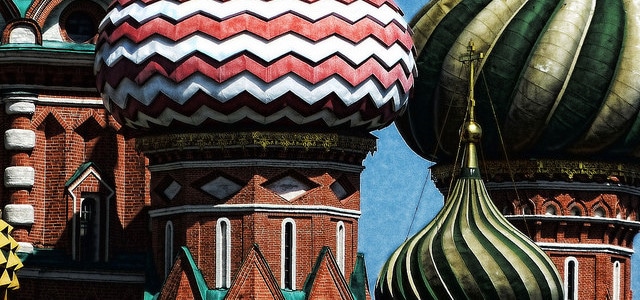Published
Linking Russia’s Crisis to Trade: Shall We Go Back to the Root of the Problem?
Subjects: Regions Russia & Eurasia

The latest crisis in a series of political events in Russia has shown that its economy is extremely fragile. Partly this is because Russia’s economy is hugely specialized in minerals and hydrocarbons, and its share in this industry has been increasing over the years from almost 50% in 1997 to more than 70% in 2013. This leaves little scope to diversify its economy.
Regardless of the precise trigger of the current chaos, Russia is faced with western sanctions in response to its actions in Ukraine, has a corrupt version of state capitalism, and has a government that maintains too close connections with a variety of large companies. All these issues are symbols of a weak domestic institutional system. Indeed, there is a close connection between the development of domestic institutions and economic growth, and trade.
Countries which are capable of delivering strong domestic courts, contracting enforcement mechanisms, and robust property rights will find themselves in a better position to export in those sectors which carry along higher value added. This will also benefit the Russian economy.
This is summarized in the figure below. The horizontal axis denotes the quality of domestic institutions for about 60 countries. The vertical axis represents the value added demanded by foreign countries in their final consumption. This indicator shows how industries export value both directly but also indirectly through other countries to the final consumer abroad. It can therefore be interpreted as “exports of value added”.
Looking at the figure one can see that countries such as Ireland, Belgium and Germany perform well compared what one could expect based on their respective levels of development. These countries are located in the upper-right corner. The vertical line represents the average value of domestic institutions based on all countries in the sample whereas the horizontal line is the average value of exports of value added for all countries.
Other countries such as France, Japan and the USA carry forward less value added in their exports as they are placed below the horizontal line in the graph, but these are larger markets and are more self-sufficient. This is, however, not the case for other larger emerging economies which are placed in the lower-left corner as these countries often have an export-led growth strategy which forms an important ingredient of their development package.
And what about Russia? Looking at the figure below one can see that Russia is at the far bottom-left showing low levels of export of value-added and extreme low level of domestic institutions. Obviously this greatly reflects Russia’s extreme lack of economic diversification and engagement in global supply chains which could, if improved, contribute to its domestic prosperity.
Does increasing domestic institutions in Russia form a panacea? No, certainly not. Creating domestic value added and earning them through exports depends on a whole battery of other factors such as traditional trade costs like tariffs, NTBs, transports systems and regulatory procedures. Yet, more than often these issues are inter-linked with a robust domestic institutional set-up.
